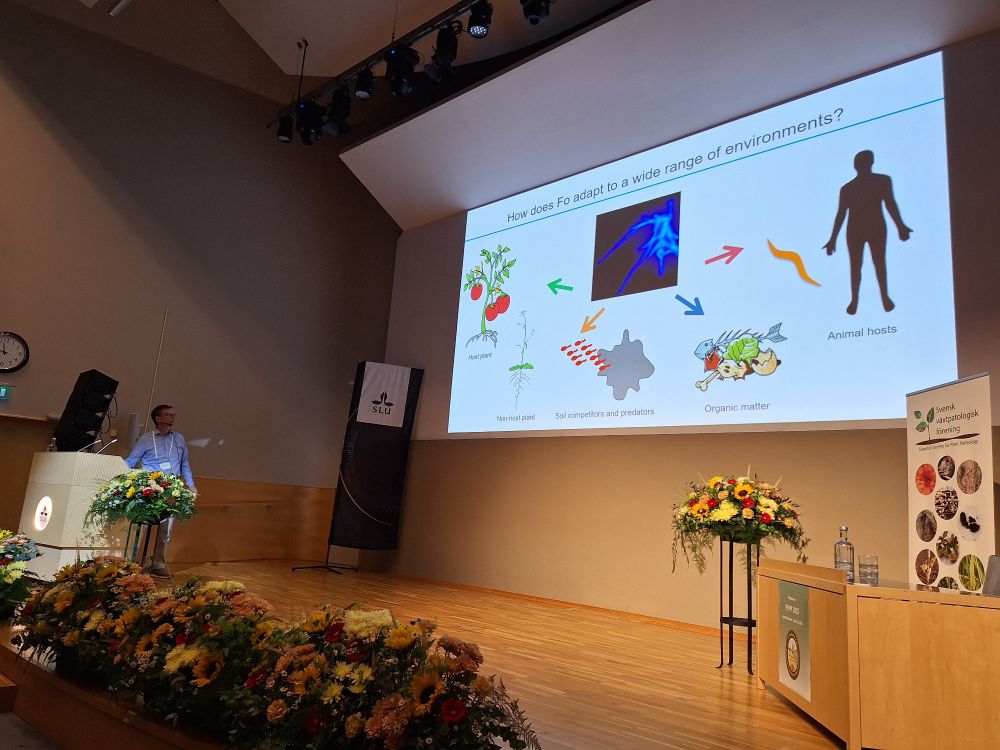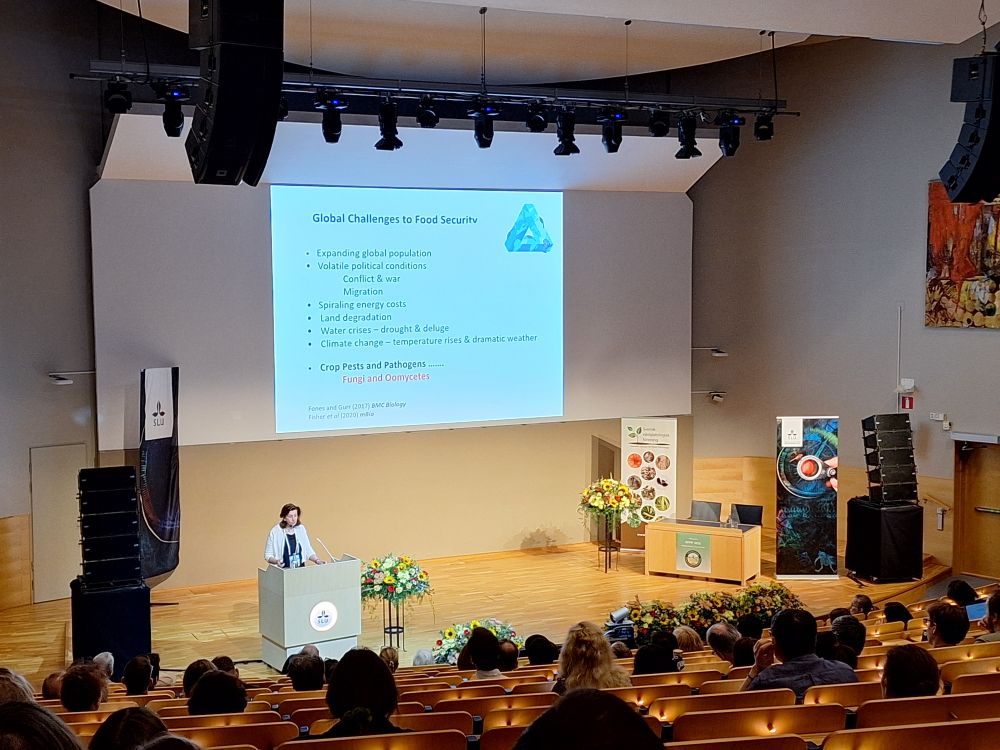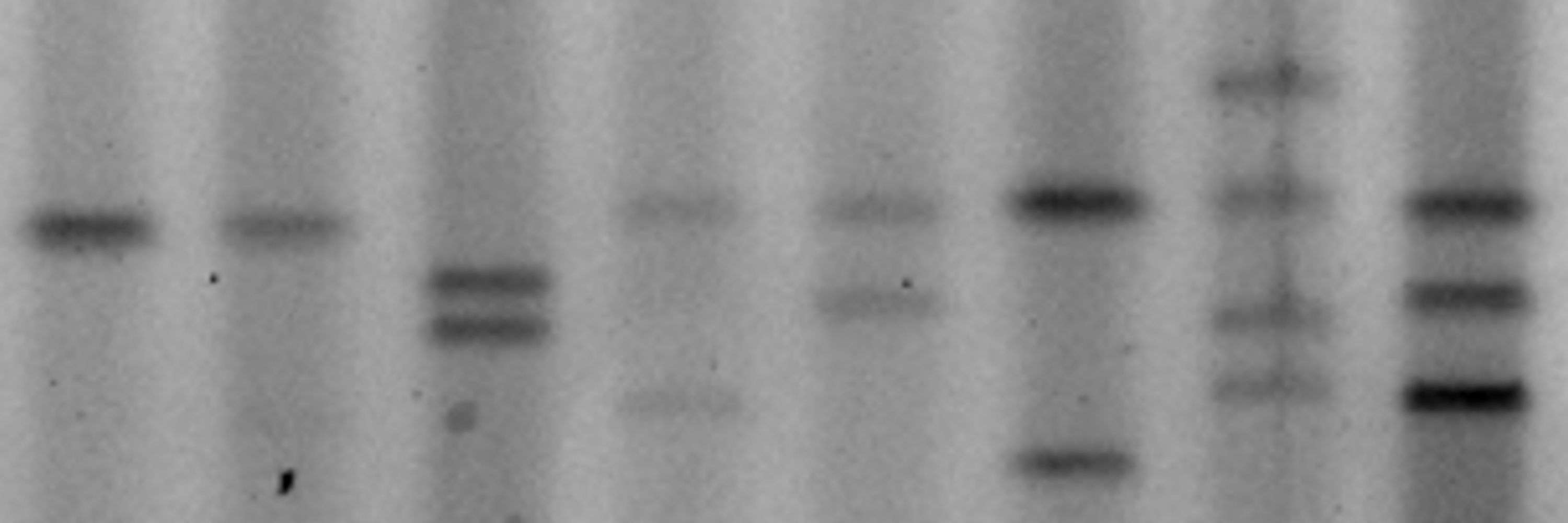
Thorsten Langner
@thorstenlangner.bsky.social
Group leader at the Max Planck Institute for Biology in Tuebingen. Adaptive evolution of filamentous plant pathogens 🌾🍄🧬. Love nature and music 🎸🥁 dogfather 🐕
Where is this type of work heading? We propose an experimental framework for predicting and testing of evolutionary outcomes of pathogen effector—host target interactions. This has implications for preparing for the next disease outbreak and plant disease resistance breeding.

August 13, 2025 at 2:36 PM
Where is this type of work heading? We propose an experimental framework for predicting and testing of evolutionary outcomes of pathogen effector—host target interactions. This has implications for preparing for the next disease outbreak and plant disease resistance breeding.
Two of these homoplasic amino acids are located in the binding interface to host HMA proteins! Interestingly, previous functional studies already suggested an adaptive role of these sites.
elifesciences.org/articles/8709
www.sciencedirect.com/science/arti...
elifesciences.org/articles/8709
www.sciencedirect.com/science/arti...

August 13, 2025 at 2:36 PM
Two of these homoplasic amino acids are located in the binding interface to host HMA proteins! Interestingly, previous functional studies already suggested an adaptive role of these sites.
elifesciences.org/articles/8709
www.sciencedirect.com/science/arti...
elifesciences.org/articles/8709
www.sciencedirect.com/science/arti...
We found three cases of homoplasy! For example, check how Methionine at position 78 (ATG) mutated independently into Leucine: CTG in APikL1 and TTG in APikl4 and APikL5.
Evolution keeps coming up with the same solution over and over. Convergent evolution at its finest level!
Evolution keeps coming up with the same solution over and over. Convergent evolution at its finest level!

August 13, 2025 at 2:36 PM
We found three cases of homoplasy! For example, check how Methionine at position 78 (ATG) mutated independently into Leucine: CTG in APikL1 and TTG in APikl4 and APikL5.
Evolution keeps coming up with the same solution over and over. Convergent evolution at its finest level!
Evolution keeps coming up with the same solution over and over. Convergent evolution at its finest level!
Remarkably, only the naturally occurring D66N (Asp to Asn, GAT to AAT) expanded the binding spectrum! Basically, natural selection has picked the only one mutation that confers the phenotype!

August 13, 2025 at 2:36 PM
Remarkably, only the naturally occurring D66N (Asp to Asn, GAT to AAT) expanded the binding spectrum! Basically, natural selection has picked the only one mutation that confers the phenotype!
In our case, the ancestral GAT can mutate into codons that can encode 7 other amino acids (via single nucleotide mutations).

August 13, 2025 at 2:36 PM
In our case, the ancestral GAT can mutate into codons that can encode 7 other amino acids (via single nucleotide mutations).
We previously demonstrated that the effector APikL2 of the blast fungus acquired a mutation (Asp to Asn, GAT to AAT) in an effector-target binding interface that expanded its binding spectrum to plant heavy-metal associated (HMA) domain containing proteins.
journals.plos.org/plospathogen...
journals.plos.org/plospathogen...

August 13, 2025 at 2:36 PM
We previously demonstrated that the effector APikL2 of the blast fungus acquired a mutation (Asp to Asn, GAT to AAT) in an effector-target binding interface that expanded its binding spectrum to plant heavy-metal associated (HMA) domain containing proteins.
journals.plos.org/plospathogen...
journals.plos.org/plospathogen...
We performed "rewinding the tape" experiments based on ancestral sequence resurrection of an effector from the blast fungus Magnaporthe oryzae to reveal how historical contingency and functional constraints have shaped effector evolution.
August 13, 2025 at 2:36 PM
We performed "rewinding the tape" experiments based on ancestral sequence resurrection of an effector from the blast fungus Magnaporthe oryzae to reveal how historical contingency and functional constraints have shaped effector evolution.
Full house at our friday seminar today @mpi-bio-fml.bsky.social featuring Edwige Moyroud from @slcuplants.bsky.social on the evolution and development of pattern formation in flowers.
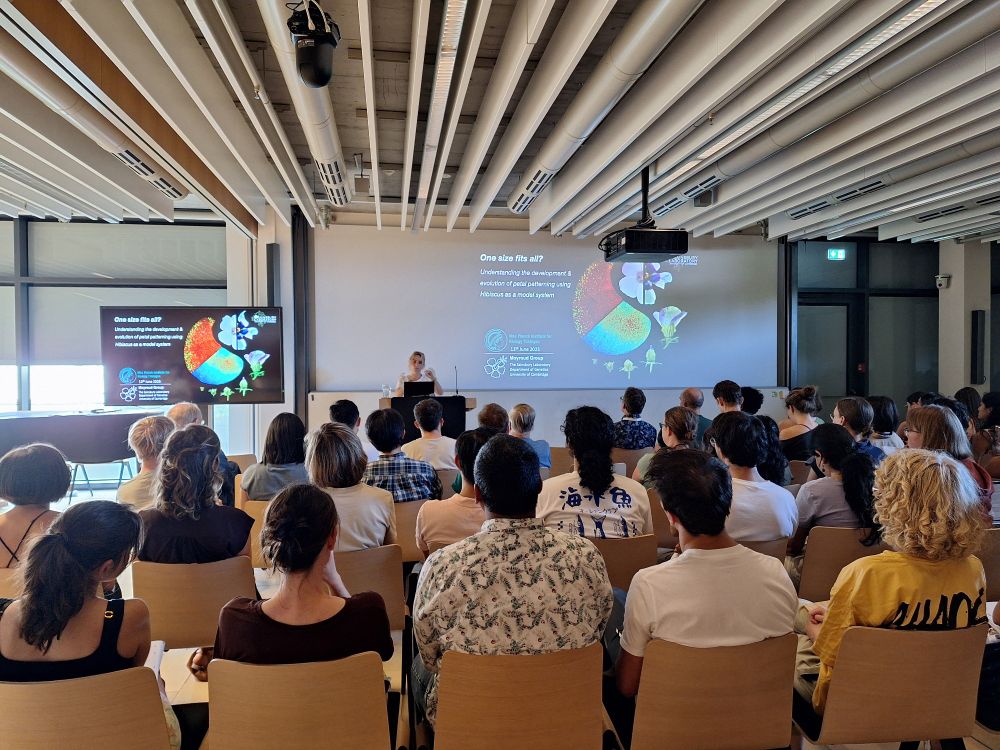
June 13, 2025 at 1:09 PM
Full house at our friday seminar today @mpi-bio-fml.bsky.social featuring Edwige Moyroud from @slcuplants.bsky.social on the evolution and development of pattern formation in flowers.
The last speaker of #efpp2025 is @derekseveri.bsky.social on the challenges and opportunities of plant colonising beneficial bacteria

June 5, 2025 at 12:12 PM
The last speaker of #efpp2025 is @derekseveri.bsky.social on the challenges and opportunities of plant colonising beneficial bacteria
Starting the afternoon session #efpp2025 is Blanca Landa presenting the BeXyl project in response to the threat caused by Xylella fastidiosa in Europe

June 5, 2025 at 11:42 AM
Starting the afternoon session #efpp2025 is Blanca Landa presenting the BeXyl project in response to the threat caused by Xylella fastidiosa in Europe
Amazing talk this morning #efpp2025 by @tatsuyanobori.bsky.social on spatial multiomics in plant pathogen interaction!
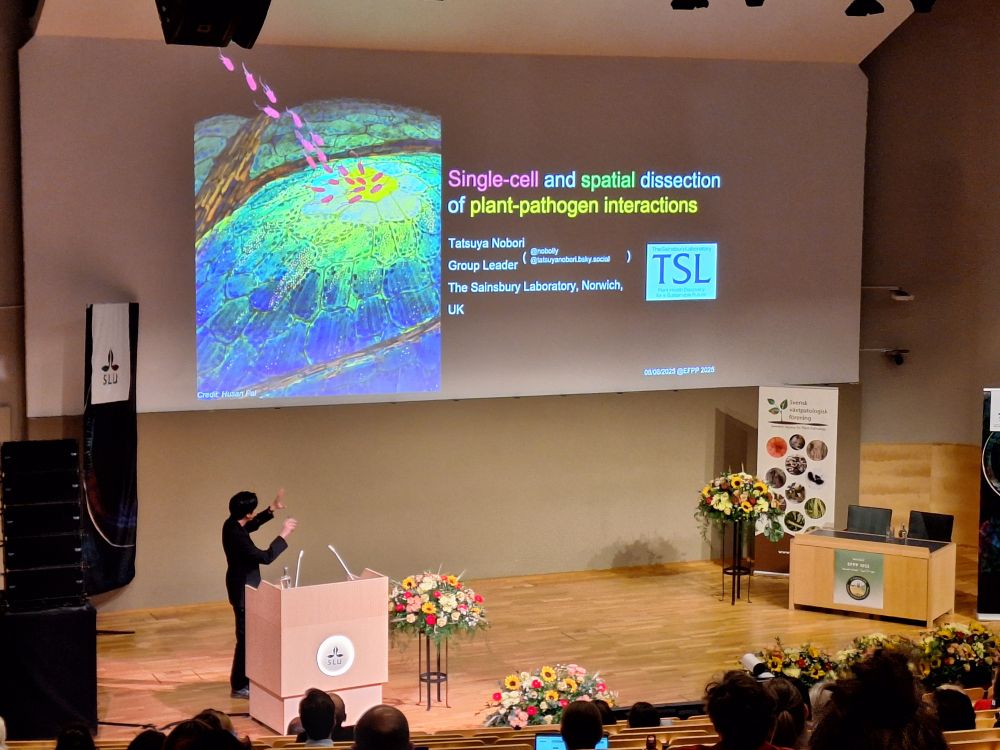
June 5, 2025 at 11:35 AM
Amazing talk this morning #efpp2025 by @tatsuyanobori.bsky.social on spatial multiomics in plant pathogen interaction!
Next up at #efpp2025 is @ssoubeyrand.bsky.social adressing the question how we can utilise diverse types of surveillance data for modelling plant disease spread

June 4, 2025 at 7:40 AM
Next up at #efpp2025 is @ssoubeyrand.bsky.social adressing the question how we can utilise diverse types of surveillance data for modelling plant disease spread
Daniel is looking for postdocs. Highly recommended if you're interested in plant pathogen evolution!
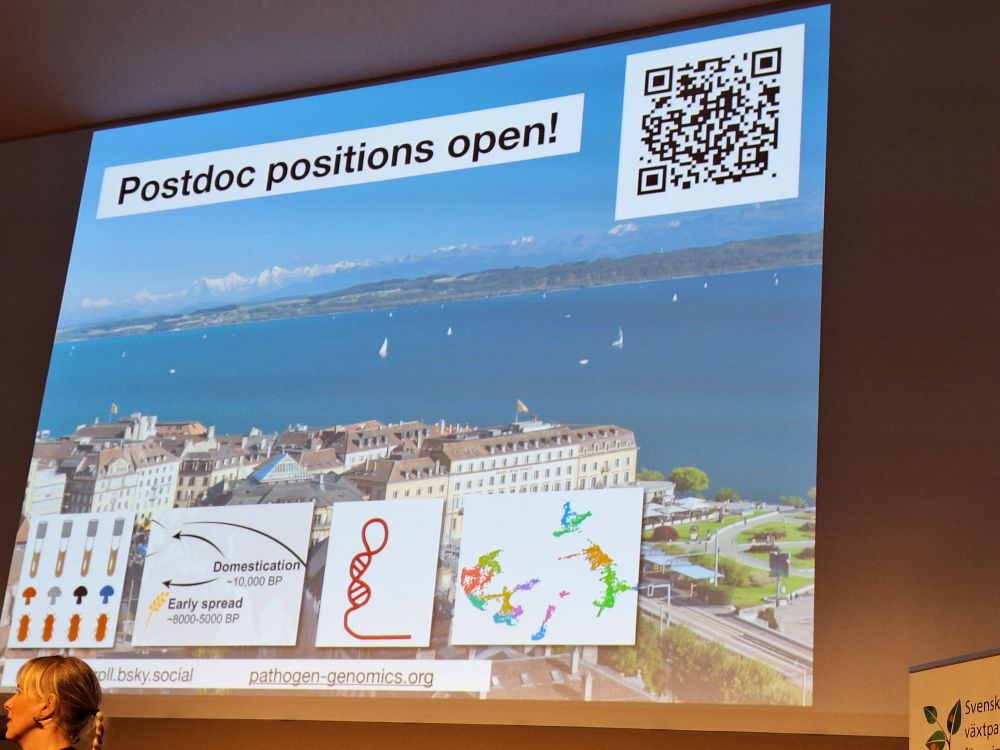
June 3, 2025 at 9:49 AM
Daniel is looking for postdocs. Highly recommended if you're interested in plant pathogen evolution!
Next plenary speaker #efpp2025 is @danielcroll.bsky.social about the importance of geographic breadth and migration in plant pathogen evolution

June 3, 2025 at 9:18 AM
Next plenary speaker #efpp2025 is @danielcroll.bsky.social about the importance of geographic breadth and migration in plant pathogen evolution
Continuous technical advances contributed to the success of genomics in plant-microbe research and exciting developments keep happening to this date!

January 20, 2025 at 9:51 AM
Continuous technical advances contributed to the success of genomics in plant-microbe research and exciting developments keep happening to this date!
Lesson 1: Plant pathogens are in constant coevolutionary conflict with their hosts
Lesson 2: Plant pathogen genomes are highly diverse
Lesson 3: Plant pathogen genomes are non-randomly “organised”
Lesson 4: Diverse mechanisms drive genomic diversity in plant-pathogen populations
Lesson 2: Plant pathogen genomes are highly diverse
Lesson 3: Plant pathogen genomes are non-randomly “organised”
Lesson 4: Diverse mechanisms drive genomic diversity in plant-pathogen populations

January 20, 2025 at 9:51 AM
Lesson 1: Plant pathogens are in constant coevolutionary conflict with their hosts
Lesson 2: Plant pathogen genomes are highly diverse
Lesson 3: Plant pathogen genomes are non-randomly “organised”
Lesson 4: Diverse mechanisms drive genomic diversity in plant-pathogen populations
Lesson 2: Plant pathogen genomes are highly diverse
Lesson 3: Plant pathogen genomes are non-randomly “organised”
Lesson 4: Diverse mechanisms drive genomic diversity in plant-pathogen populations
The first langner lab Xmas party! 🤩 I feel incredibly lucky and happy to have such an amazing crowd of young scientist and incredible people around me!

December 12, 2024 at 8:48 PM
The first langner lab Xmas party! 🤩 I feel incredibly lucky and happy to have such an amazing crowd of young scientist and incredible people around me!





